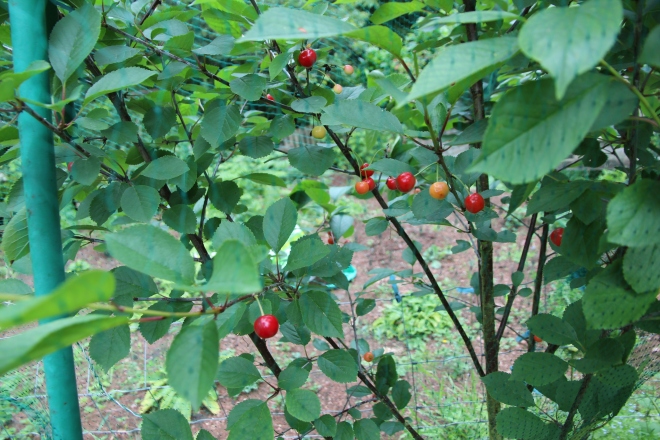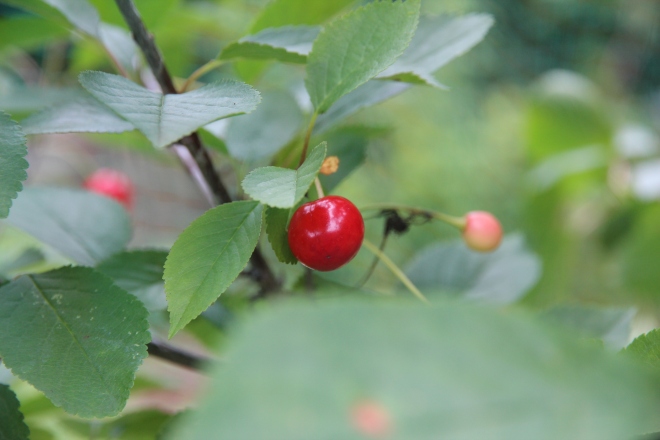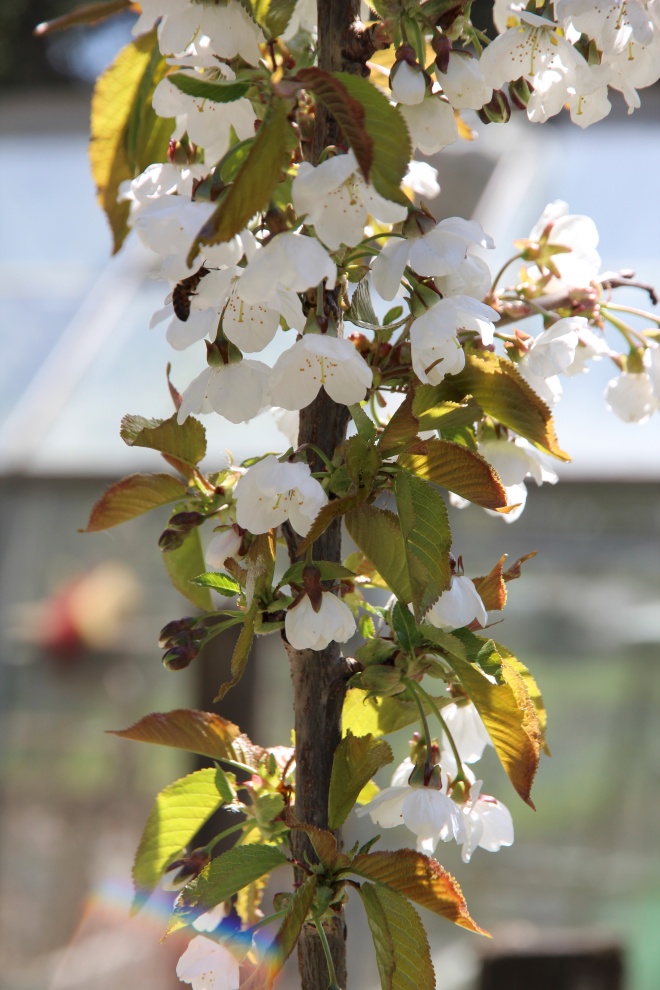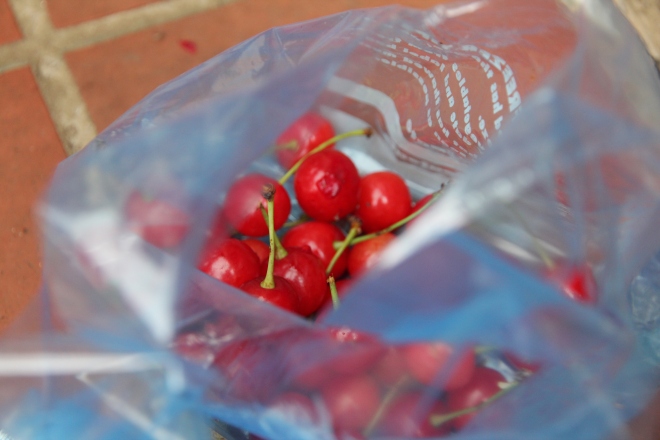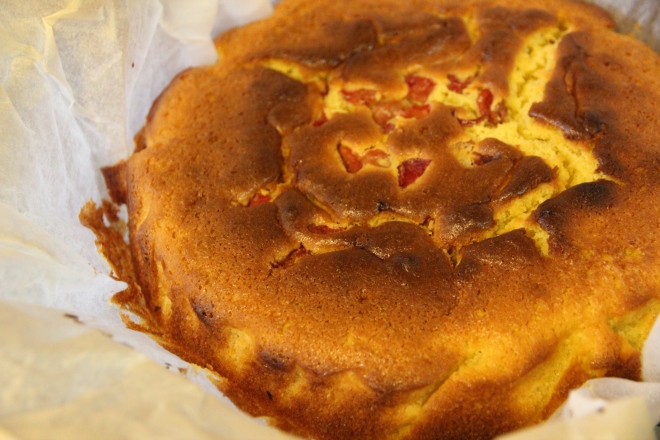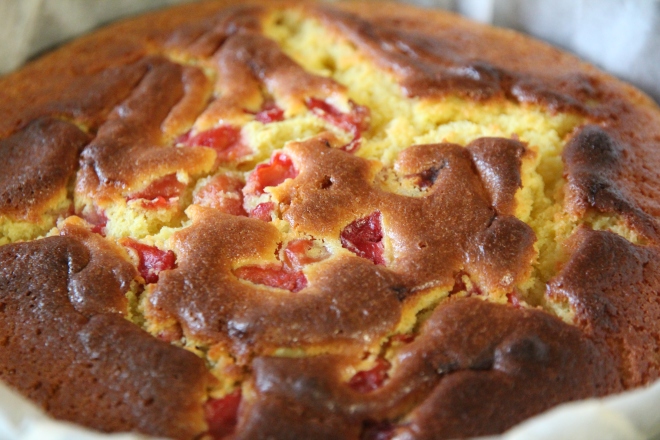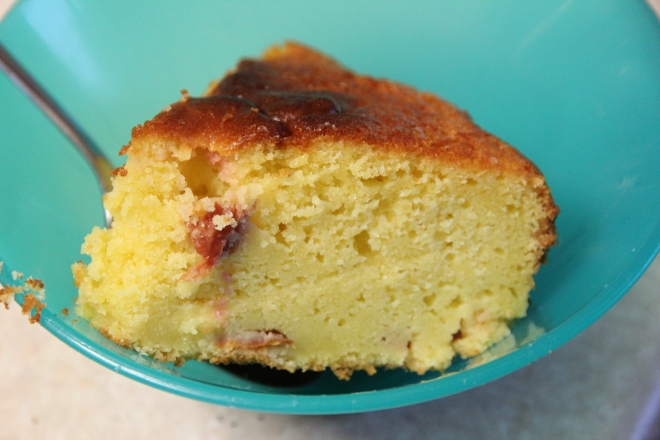PRUNE: May-June
HARVEST: July-October
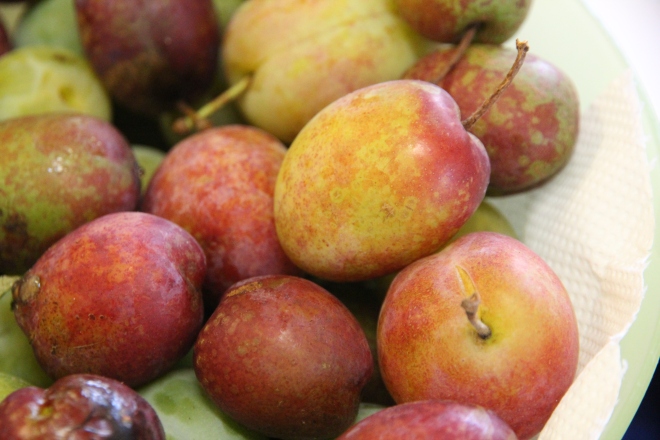
All plums and gages are varieties of Prunus domestica. Gages (small, green plums) tend to be sweeter tasting and more spherical in shape than the darker purple plums, more popularly sold in UK stores therefore investing in your own gage tree at home in the garden is an excellent idea. Do not be put off by the bogey-like colour – they taste divine.
Plum has many species, and taxonomists differ on the count. Depending on the taxonomist, between 19 and 40 species of plum exist. From this diversity only two species, the hexaploid European plum (Prunus domestica) and the diploid Japanese plum (Prunus salicina and hybrids), are of worldwide commercial significance. The origin of these commercially important species is uncertain.
Plums may have been one of the first fruits domesticated by humans. The most abundant cultivars have not been found wild, only around human settlements. Prunus domestica has been traced to East European and Caucasian mountains while Prunus salicina and Prunus simonii originated in Asia. Plum remains have been found in Neolithic age archaeological sites along with olives, grapes and figs.
It is considered plums came originally from Asia. They were likely first grown in China more than 2,000 years ago and made their way to Rome by 65 B.C. The fruit Prunus armeniaca gained its name from the beliefs of Pliny the Elder who was a Roman historian and scientist of the first century. He maintained the apricot was a kind of a plum, and had originally come from Armenia.
The plum is in fact closely related to the apricot and peach and numerous intermediary forms like Prunus simonii, the Apricot Plum. Prunus salicina, Asian plum native to China and Japan, has been in cultivation for thousands of years and was mentioned in the songs and writings of Confucius (551 BC – 479 BC). Although Pompey the Great is credited with introducing the cultivated plum to Rome in 65 BC, it is likely that wild plums were used by the peoples of southern Europe for many thousands of years. Wild plums flourished throughout the Old and New Worlds. In fact, the domestic plums we eat today descend from numerous sources. Some sources believe the European plum was carried to Rome around 200 BC, then north to Europe. Others say that the Duke of Anjou carried the plum home as he returned from Jerusalem at the close of the Fifth Crusade (1198 to 1204 AD).
The French enthusiastically embraced the European plum during whichever scenario it arrived, using it in the kitchen as both fresh and dried as prunes. French immigrants carried plum pits to Quebec where a traveler recorded plum orchards flourishing as early as 1771. Plums came to North America with British settlers.
The markings on plum stones are unique to each variety, like a fingerprint. When Henry VIII’s ‘Mary Rose’ was raised after 450 years from the sea-bed, over 100 varieties of plum stones were discovered. It is an indication to how popular plums were in our diets during the Tudor period and are appreciation at the many different varieties on offer. It is a shame that instead of this giant figure increasing, we are lucky if we have more than 50 varieties available nowadays.
Plums are produced around the world, and China is the world’s largest producer, 6,100,000 tonnes during 2015.
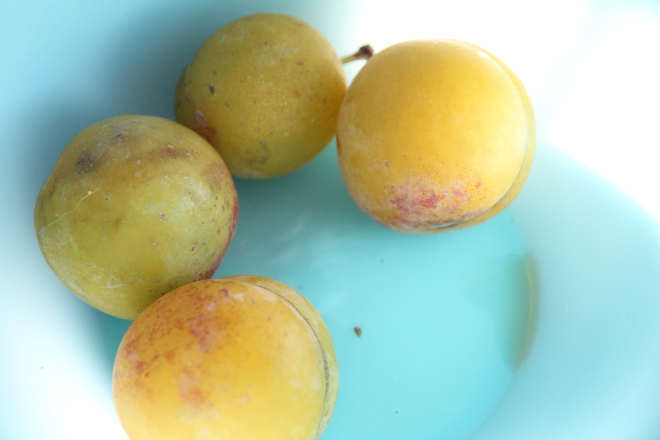
Plums can be self-fertile but it is safer to purchase two, to make sure. ‘Victoria’ is a popular, reliable, high-yielding, self-fertile cooker and eater. ‘Marjorie’s Seedling’, a dark purple and another popular variety is a late-ripening, heavy-cropping type that can give your fruit as late as October. Other popular plums that will be recommended are ‘Czar’, blue plums for cooking that apparently thrive in poor soil; ‘Early Laxton’, a dessert plum with red flushed, yellow fruit yielding in mid to late summer; ‘Blue Tit’, a compact dessert plum with blue fruit in late summer.
For Green Gages, ‘Cambridge Gage’, partly self-fertile, green fruits, sweet; most reliable of the gages, but vigorous and needs a warm garden; ‘Imperial Gage’ is self-fertile and described as ‘reliable’; ‘Oullin’s Gage’ is self-fertile and recommended by River Cottage for cooking or eating fresh and flowers later so it may miss any late frosts – plum blossom is very early and delicate.
You must be warned that some plum varieties do refuse to pollinate each other. ‘Rivers’ Early Prolific’ and ‘Jefferson’ or ‘Cambridge Gage’ and ‘Old Green Gage’ are such examples. Check with your suppliers for further details.
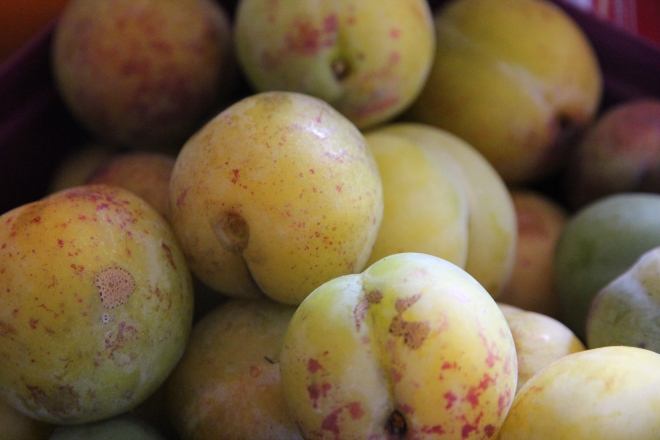
Plums like fertile, well-drained soil in sunny, sheltered locations. They are particular about water- they like a reasonable amount during warmer months but despise waterlogged soils at any time of the year so a well-drained site is really ideal. Add plenty of organic matter if the soil is too dry to help the plant retain water in its roots. Feed and mulch the tree every spring to kick-start its blossom and fruit production and make sure you water in during dry spells, especially when it is settling in during the first year. The trees themselves are quite strong and hardy but unfortunately, the blossom is often early and hits the frost. Avoid frost pockets or windy sites and follow our crazy example of positioning ladders around the trees and wrapping the blossom very gently and carefully up in excessive amounts of horticultural fleece at night and then, using pegs, hoist it up during the daytime so pollinators can do their business.
A word on ‘Victoria’ plums – they are prone to such heavy cropping that their branches can snap if unsupported. This happened to our one a couple of years back when I foolishly removed some trees growing nearby that were supporting it. It has struggled on though like a brave soldier and produced an excellent crop this year.
Depending on the variety, location and type of plum, you can harvest from July to October. The first few fruits falling from the tree are a sign it is ready to start picking. Colour, squidgyness and ease of the plum being pulled from the tree branch is the next indicator. The fruit ripens very gradually over time so do not be too hasty – harvest every day whatever seems ready over time. Pick carefully to avoid bruising the fruit and try to leave a short stalk to keep the fruit and next year’s buds intact.
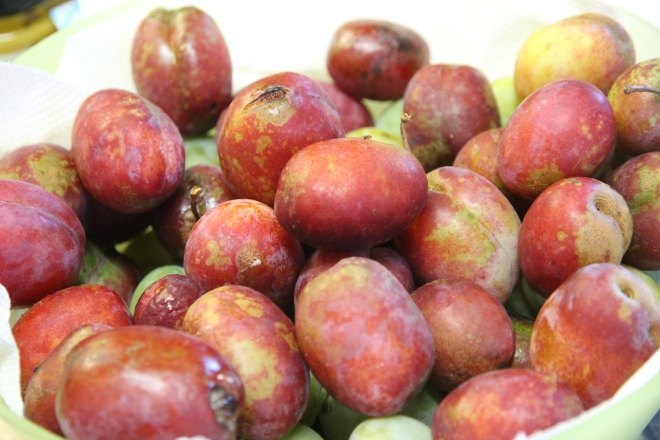
Silver leaf disease is the most likely nuisance for plum trees. Minimising pruning helps reduce the likelihood of this disease a lot. Brown rot, blossom wilt, bacterial canker and rust are also a possibility. Spots of gummy looking resin on the bark are a sign that the tree is under stress. Aphids can appear in early spring but rarely do more than cosmetic damage. Worst case would be larvae in some of the fruit.
100g of fresh plums also contain 350 IU Vitamin A, 10mg Vitamin C, Vitamin K, 150 mg of potassium and smaller amounts of B vitamins and other minerals.
Some plums are best eaten fresh, others need to be cooked. All plums can be frozen. The best way is to de-stone them and put the halves in freezer bags but if you don’t have time, you can freeze them whole and remove the stones once defrosted at a later date. I freeze most of my plums to make jams and save the fresh ones for people to eat or to make delicious plum crumble from.
I offer two recipes: my green gage jam (feel free to apply the same recipe for other plums or half and half) and plum crumble. Dig in.
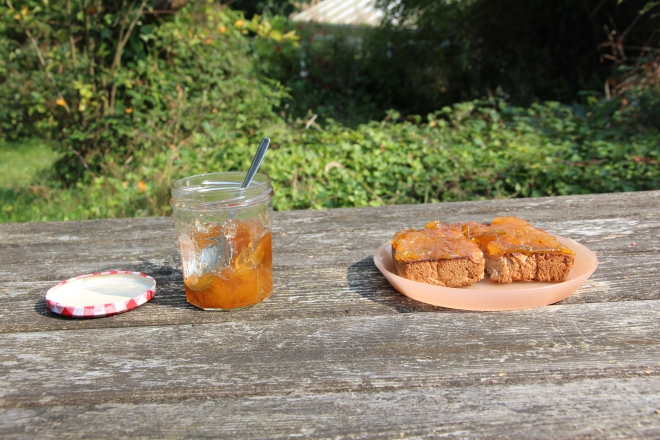

Green Gage Jam
My favourite way to eat homemade green gages – or plums – is in jam. Plums have an (almost) high amount of pectin in them so the jam should set without the aid of extra special pectin liquid however, I have been known to resort to using it in plum jam before so do not be afraid to do so yourself.
Serve the jam slathered thickly on buttered toast with a cup of tea on a sunny afternoon and you will be in heaven.
(Makes 2.25kg worth)
- 1 kg plums – 1kg granulated sugar – Juice of 1-2 lemons – 125ml Certo liquid pectin, optional
- Slice and remove the stones from the plums and place in a large pan. Add the sugar and lemon juice.
- Stir over a high heat and then allow the fruit to stew, checking the temperature with a jam thermometer. When it has reached boiling point, allow it to bubble furiously for at least ten minutes.
- Meanwhile, put a china plate inside the freezer so that it is cold. Spoon a small dollop of jam onto the plate and put it back in the freezer for a minute. Take it out and run a fingertip straight through the middle of the jam splodge on the plate. If the jam ‘crinkles’ and leaves a trail as you push your fingertip through, then it is done. If it doesn’t, continue to boil the jam and check in this manner until it is ready.
- Once done, turn of the heat and if using, add the liquid pectin and stir in before you allow the jam to cool slightly.
- Bottle in steralised jars and store in a cool, dry place overnight. You can use them from the next day onwards.
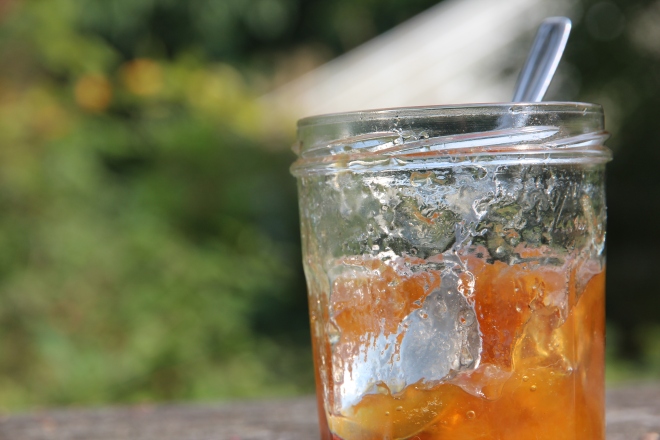
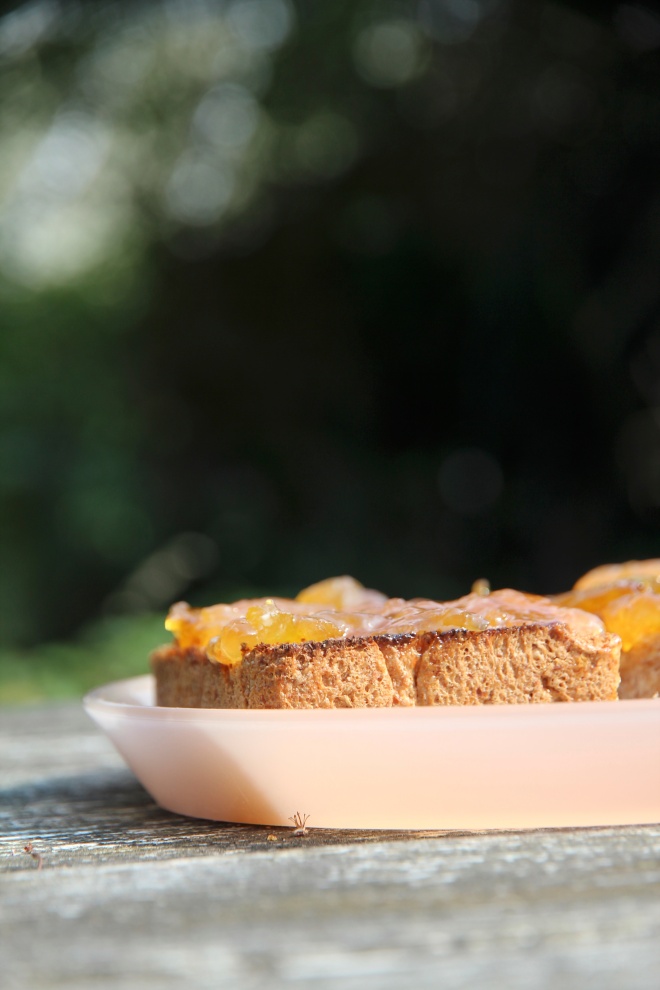
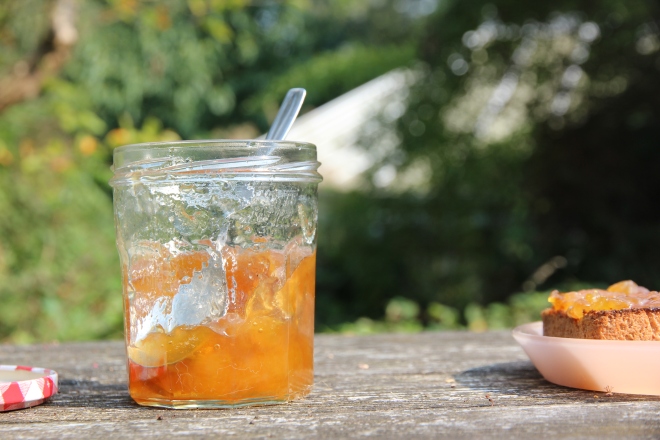
Plum Crumble
Traditional plums look gorgeous in a crumble – the red juice makes it look so pretty – but mixing in some green gages as well takes the dish to a whole new sweet level and I urge you to try it at lease once!
(Serves 6
– Lots of plums, about 1kg – Caster/ granulated sugar, to sprinkle over the plums
For the crumble topping: – 170g plain flour – 110g salted butter – 55g caster/ granulated sugar
- Preheat the oven 150C.
- De-stone the plums and cut into halves or segments. Place them in an oven-proof dish. Sprinkle a generous amount of caster or granulated sugar over the top of each layer of plums as you put them in. You want to have a nice thick layer of fruit as it is going to decrease in size during the cooking process.
- Put the flour into a bowl followed by the sugar and salted butter. Rub together using your fingertips until the mixture resembles large bread crumbs (add more butter if too dry and more flour if too sticky). Sprinkle the crumble topping over the top of the plums that have been placed in layers inside the dish.
- Bake in the oven for about 45 minutes – 1hr, or until hot and golden brown on top and the fruit is cooked underneath (once done, you can turn off the oven and leave the crumble inside to stay warm until you are ready to eat it). Serve hot with custard.

